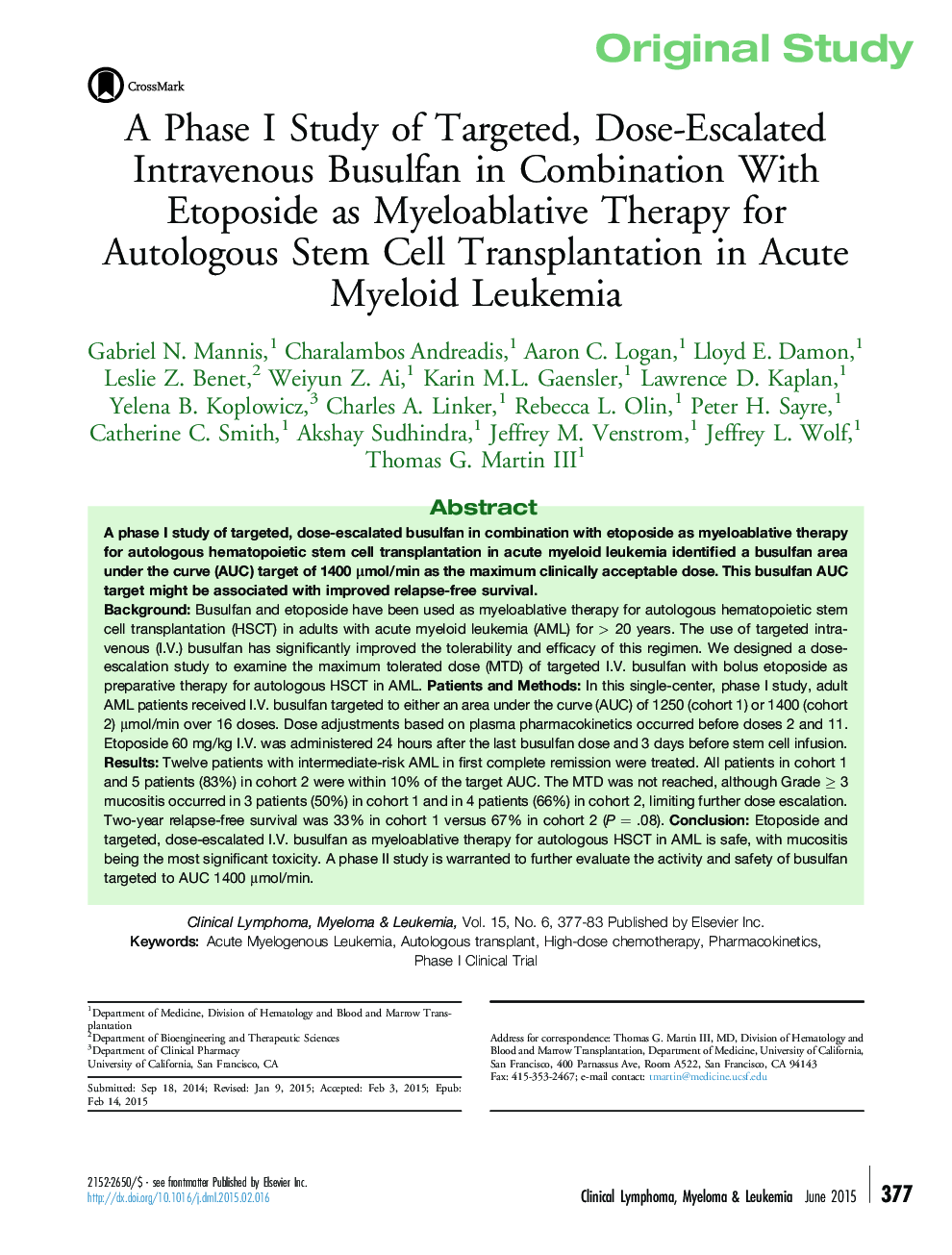| Article ID | Journal | Published Year | Pages | File Type |
|---|---|---|---|---|
| 2754244 | Clinical Lymphoma Myeloma and Leukemia | 2015 | 7 Pages |
BackgroundBusulfan and etoposide have been used as myeloablative therapy for autologous hematopoietic stem cell transplantation (HSCT) in adults with acute myeloid leukemia (AML) for > 20 years. The use of targeted intravenous (I.V.) busulfan has significantly improved the tolerability and efficacy of this regimen. We designed a dose-escalation study to examine the maximum tolerated dose (MTD) of targeted I.V. busulfan with bolus etoposide as preparative therapy for autologous HSCT in AML.Patients and MethodsIn this single-center, phase I study, adult AML patients received I.V. busulfan targeted to either an area under the curve (AUC) of 1250 (cohort 1) or 1400 (cohort 2) μmol/min over 16 doses. Dose adjustments based on plasma pharmacokinetics occurred before doses 2 and 11. Etoposide 60 mg/kg I.V. was administered 24 hours after the last busulfan dose and 3 days before stem cell infusion.ResultsTwelve patients with intermediate-risk AML in first complete remission were treated. All patients in cohort 1 and 5 patients (83%) in cohort 2 were within 10% of the target AUC. The MTD was not reached, although Grade ≥ 3 mucositis occurred in 3 patients (50%) in cohort 1 and in 4 patients (66%) in cohort 2, limiting further dose escalation. Two-year relapse-free survival was 33% in cohort 1 versus 67% in cohort 2 (P = .08).ConclusionEtoposide and targeted, dose-escalated I.V. busulfan as myeloablative therapy for autologous HSCT in AML is safe, with mucositis being the most significant toxicity. A phase II study is warranted to further evaluate the activity and safety of busulfan targeted to AUC 1400 μmol/min.
